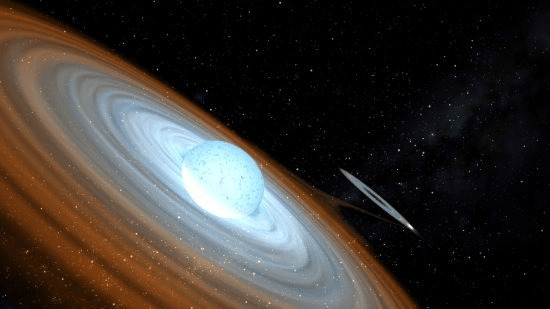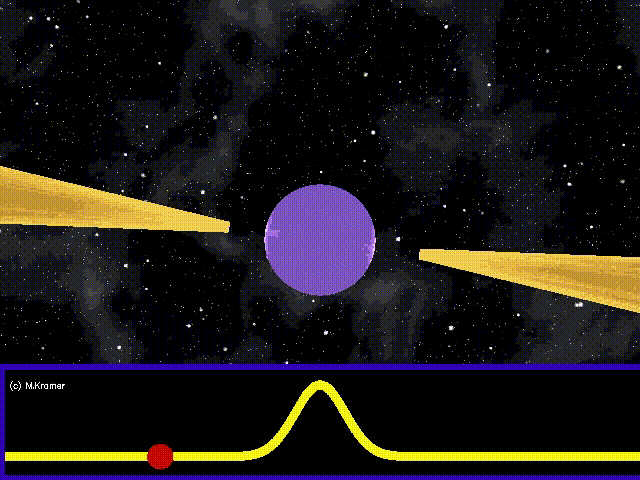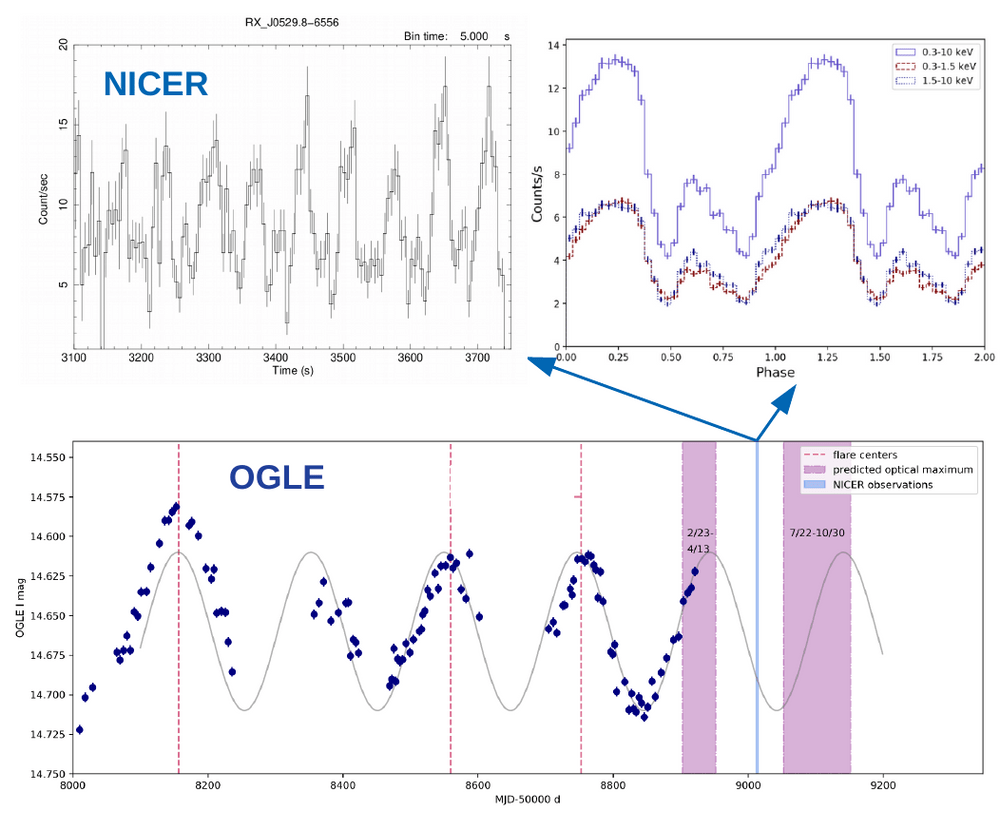Introduction
This post is the third in a series highlighting the fantastic astronomy research Amherst College students have conducted this summer. For more information on the series, visit ,,this post. This week, Astronomy Department Editor William Balmer (that’s me) interviewed Lena Treiber ’23E, who presented at the Chandra Time-Series Conference this fall. Lena attended the Dorrit Hoffleit Research Fellowship at Yale University, working with Georgios Vasilopoulos and Charles Bailyn to study an X-ray Binary. I had the opportunity to talk to Lena about the science, her experience with remote research, and her publication in The Astronomer’s Telegram.
Interview with Lena Treiber ‘23E
W: “Lena, what sort of astronomy did you research this summer?”
L: “I used X-ray and optical data to characterize properties from an outburst of a Be/X-ray binary in the Large Magellanic Cloud. There was a surprise outburst [from the RX J0529.8-6556 system which was] detected by eROSITA in June– [the RX J0529.8-6556 system] got about 200 times brighter than it is normally.”
[Astronomical data is often processed and analyzed using distinct methods for various wavelengths of light. Optical light spans a human’s visible spectrum and often is used to study the variability of stars and similarly hot but common objects, while X-ray and gamma-ray light is often emitted by the most violent and energetic astrophysical processes in the universe. eROSITA is an instrument for detecting X-rays that is hosted by the Spektr-RG space observatory (a joint Russian-German project)]
W: “You used eROSITA data, then?”
L: “Yes. We also followed up [the eROSITA detection] with observations from NICER, an X-ray satellite onboard the ISS, and Swift XRT [an X-ray telescope]. I also used ten years of archival optical data.”
W: “That’s a whole suite of instruments!. Can you explain what a Be/X-ray binary is?”

L: “Be/X-ray binaries consist of a neutron star, a type of dead star that’s the mass of the sun but the size of a city, in a wide, eccentric orbit around a high-mass star. When the neutron star gets close to the higher-mass star, it can capture material that is then channeled along its incredibly strong magnetic field lines onto the neutron star’s magnetic poles. The system then gets much brighter. Usually, the neutron star is then seen as a pulsar. We see pulses as the magnetic poles sweep in and out of view, much like a lighthouse. Part of why these systems are fascinating is because they provide “laboratories” for extreme densities and magnetic fields. Quantum mechanics, general relativity, and the strong force are all at play.”

L: “I found the “pulse period” of the neutron star: 68.68 seconds! I studied the pulse profile – essentially the changing brightness within each period of pulsation. You can also do this at different energies [of light]. We try to use different metrics to describe the pulse profile and connect our findings to physical implications of how this material is moving and emitting light. The shape of the profile during the peak of the outburst was similar to the profile from observations taken when the system was not in outburst at all. However, the profile changed significantly [after the outburst had peaked]… This result was surprising because pulse profile morphology is traditionally considered to be correlated to luminosity.”
W: “Why was studying the optical light useful?”
L: “Optical data… allows us to see the material around the high-mass star that is fed once per orbit to the neutron star. Although there appeared to be periodic flares in the optical data, which we expected to give us the orbital period and to coincide with the X-ray flares, no single period value effectively modeled these changes. I worked on finding the best model to describe the timing of these flares. Rather than a linearly increasing period, for example, I found that the best model uses three distinct period values in three epochs. This result tells us that there are complex effects going on in the disk around the high-mass star that keep us from simply seeing an orbital period. Although we did not have optical data [from] the outburst, I was able to show that, against prediction, the system’s X-ray and optical flares do not coincide.”

W: “That must have some big implications! Moving on just a bit, what were some of the challenges and triumphs you faced?”
L: “I enjoyed the balance of getting to apply skills and knowledge from courses and past research at Amherst while also learning new methods and astrophysics. For example, magnetospheric accretion is important in both these systems and the research I do at Amherst. I found X-ray astronomy to be fascinating and completely new. Because X-ray telescopes essentially count individual photons, recording the position, energy, and time of arrival of each one, the same X-ray data allowed me to both do timing and spectral analyses.
“I was incredibly grateful to be able to do this research remotely. I missed interacting with collaborators in-person, but I’m happy that I was able to still be productive and get to know people completely over Zoom.”
[Over the summer, ,,Lena’s research was published in The Astronomer’s Telegram, a short notice publication service used to quickly disseminate information to other astronomers. Lena was the third author on this publication! This publication was also reprinted in the “NICER Science Nuggets” feed, which you can ,,view here.]
W: “Thank you so much for chatting with me about your research, Lena! And best of luck with your work this semester.”
Final Thoughts
Thanks again to Lena for her science-packed interview. Look out for more coverage of astronomy summer research next week, when I’ll highlight another flash-talk by Joe Palmo ‘21 on his summer research project at NASA ().